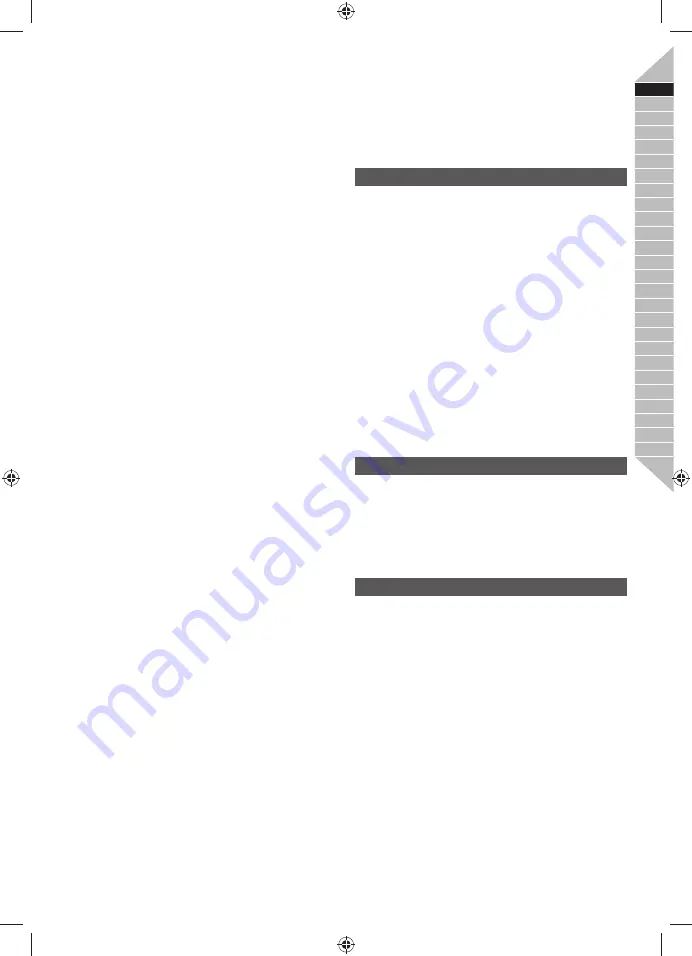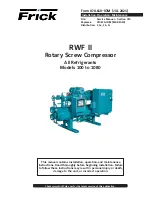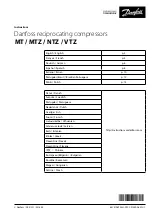
Ŷ
Under abusive conditions, liquid may be ejected
from the battery; avoid contact. If contact
accidentally occurs, flush with water. If liquid
contacts eyes, additionally seek medical help.
/LTXLGHMHFWHGIURPWKHEDWWHU\PD\FDXVHLUULWDWLRQRU
burns.
Ŷ
Battery tools do not have to be plugged into an
electrical outlet; therefore, they are always in
operating condition. Be aware of possible hazards
when not using your battery tool or when changing
accessories.
Following this rule will reduce the risk of
HOHFWULFVKRFNILUHRUVHULRXVSHUVRQDOLQMXU\
Ŷ
Do not place battery tools or their batteries near
fire or heat.
This will reduce the risk of explosion and
SRVVLEO\LQMXU\
Ŷ
Do not crush, drop or damage battery pack. Do
not use a battery pack or charger that has been
dropped or received a sharp blow.
A damaged
EDWWHU\ LV VXEMHFW WR H[SORVLRQ 3URSHUO\ GLVSRVH RI D
dropped or damaged battery immediately.
Ŷ
Batteries can explode in the presence of a source
of ignition, such as a pilot light.
To reduce the risk of
VHULRXVSHUVRQDOLQMXU\QHYHUXVHDQ\FRUGOHVVSURGXFW
in the presence of open flame. An exploded battery
can propel debris and chemicals. If exposed, flush with
water immediately.
Ŷ
Do not charge battery tool in a damp or wet location.
Following this rule will reduce the risk of electric shock.
Ŷ
For best results, your battery should be charged
in a location where the temperature is more than
10°C but less than 38°C.
To reduce the risk of serious
SHUVRQDOLQMXU\GRQRWVWRUHRXWVLGHRULQYHKLFOHV
Ŷ
Under extreme usage or temperature conditions,
battery leakage may occur. If liquid comes in
contact with your skin, wash immediately with soap
and water. If liquid gets into your eyes, flush them
with clean water for at least 10 minutes, then seek
immediate medical attention.
Following this rule will
UHGXFHWKHULVNRIVHULRXVSHUVRQDOLQMXU\
Ŷ
Do not use a battery pack that is damaged or
modified.
Damaged or modified batteries may exhibit
unpredictable behavior resulting in fire, explosion or risk
RILQMXU\
Ŷ
Do not modify or attempt to repair a battery pack
that has been damaged.
Ŷ
Do not expose a battery pack or appliance to
fire or excessive temperature.
Exposure to fire or
temperature above 130°C may cause explosion.
Ŷ
Follow all charging instructions and do not charge
the battery pack or appliance outside of the
temperature range specified in the instructions.
Charging improperly or at temperatures outside of the
specified range may damage the battery and increase
the risk of fire.
TRANSPORTING LITHIUM BATTERIES
Transport the battery in accordance with local and national
provisions and regulations.
)ROORZDOOVSHFLDOUHTXLUHPHQWVRQSDFNDJLQJDQGODEHOOLQJ
when transporting batteries by a third party. Ensure that
no batteries can come in contact with other batteries
or conductive materials while in transport by protecting
exposed connectors with insulating, non-conductive caps
or tape. Do not transport batteries that are cracked or
leaking. Check with the forwarding company for further
advice.
BATTERIES
Battery packs which have not been used for some time
should be recharged before use.
Temperatures in excess of 50°C (122°F) reduce the
performance of the battery pack. Avoid extended exposure
to heat or sunshine (risk of overheating).
The contacts of chargers and battery packs must be kept
clean.
For an optimum life-time, the battery packs have to be fully
charged, after used.
To obtain the longest possible battery life remove the
battery pack from the charger once it is fully charged.
For battery pack storage longer than 30 days:
• Store the battery pack where the temperature is below
27°C and away from moisture.
• Store the battery packs in a 30% - 50% charged
condition.
• Every six months of storage, charge the pack as
normal.
BATTERY PACK PROTECTION
The battery pack has overload protection that protects it
from being overloaded and helps to ensure long life. Under
extreme stress the battery electronics switch off the product
automatically. To restart, switch the product off and then
on again. If the product does not start up again, the battery
pack may have discharged completely. In this case it must
be recharged in the battery charger.
RESIDUAL RISKS
Even when the product is used as prescribed, it is still
impossible to completely eliminate certain residual risk
factors. The following hazards may arise and the operator
should pay special attention to avoid the following:
Ŷ
Use the product only for its intended use. Do not alter or
modify the product from the original design or function.
Ŷ
Always be aware that misuse and improper handling
RIWKHSURGXFWFDQFDXVHLQMXU\WR\RXUVHOIDQGRWKHUV
Ŷ
Never leave the product unattended with the hose
attached to a tool.
Ŷ
Do not continue to use the product or hose which leaks
air or does not function properly.
Ŷ
5LVNRIEXUVWLQJ
–
'RQRWDGMXVWUHJXODWRUWRUHVXOWLQRXWSXWSUHVVXUH
greater than marked maximum pressure of
attachment.
Ŷ
Heat and high temperature are generated while motor
and cylinder are running. Touching exposed metal can
result in serious burns.
–
Always keep the air compressor away from the
3
English
|
EN
FR
DE
ES
IT
NL
PT
DA
SV
FI
NO
RU
PL
CS
HU
RO
LV
LT
ET
HR
SL
SK
BG
UK
TR
EL
Summary of Contents for R18AC
Page 196: ...194 ...
Page 197: ...4 11 5 6 8 12 7 1 2 10 9 3 195 ...
Page 198: ...1 2 3 4 1 2 3 1 2 196 ...
Page 199: ...2 1 3 2 1 3 197 ...
Page 200: ...2 3 1 20 PSI 1 3 2 1 2 2 1 3 4 198 ...
Page 201: ...2 3 1 2 1 20 PSI 1 3 2 1 2 2 1 3 4 199 ...
Page 202: ...2 3 1 1 2 1 2 20 PSI 1 3 2 2 1 3 4 200 ...
Page 203: ...6 5 7 8 201 ...
Page 267: ......
Page 269: ...A B C D ...
Page 288: ...20190919v1 Techtronic Industries GmbH Max Eyth Straße 10 71364 Winnenden Germany ...






































